'Disconcerting' rise in road rage shootings resulting in death or injury, data shows
"I don't think we quite realized how dramatic the change was going to be."
In March, the victim was a mother of six children traveling on a North Carolina interstate.
Then in April, it was a man driving with his wife near the Naval Observatory in Washington, DC. In May, a 6-year-old boy in California on his way to kindergarten.
These are just some of the people shot and killed in suspected road rage incidents in recent weeks. Others have suffered severe injuries, including a toddler left with a critical head injury following an apparent dispute over "somebody not letting somebody into a lane of traffic," Chicago police said of the April shooting.
So far this year, as of June 7, a person has been killed or injured in a suspected road rage shooting on average every 18 hours in the United States, according to an analysis by Everytown for Gun Safety of data compiled by the Gun Violence Archive.
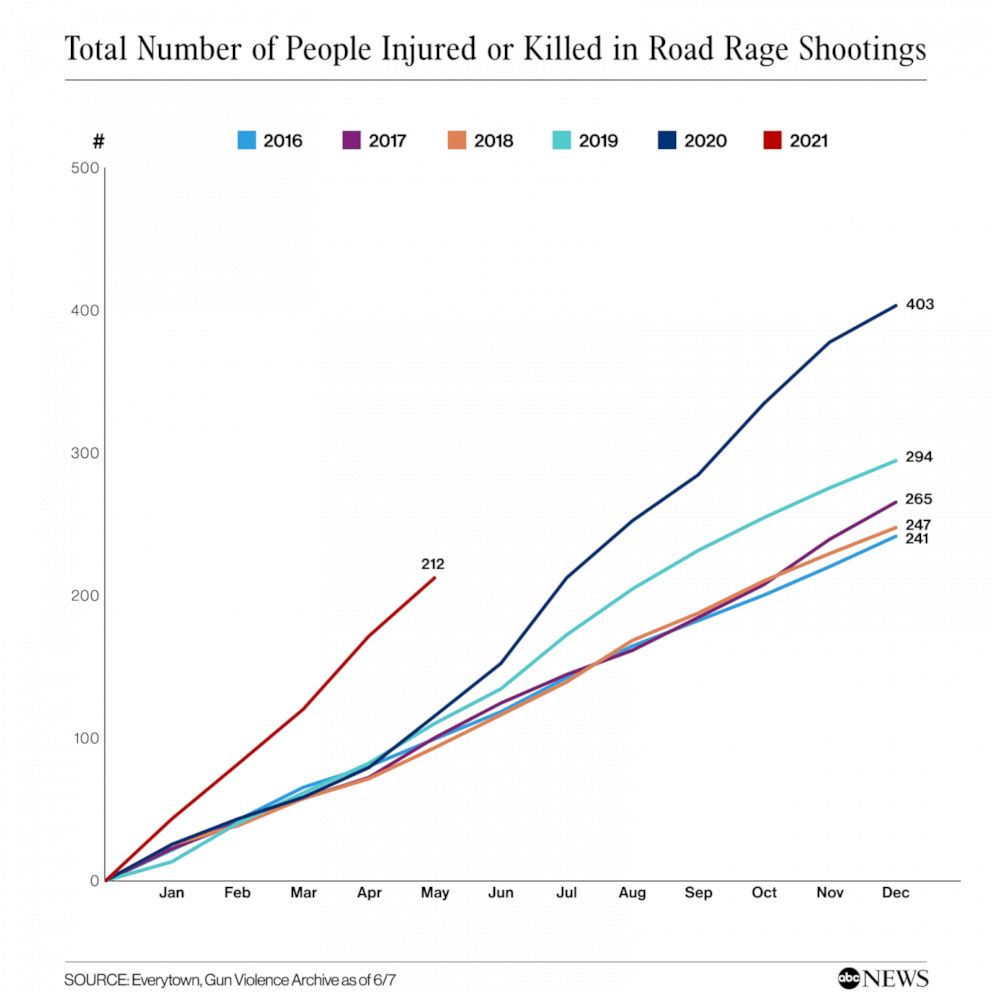
These incidents have increased steadily as well in recent years. The number of people shot and killed or wounded in road rage shootings nearly doubled over the past 12 months, from a monthly average of 22 deaths and injuries from June 2016 through May 2020 to a monthly average of 42 deaths and injuries between June 2020 and May 2021, Everytown found.
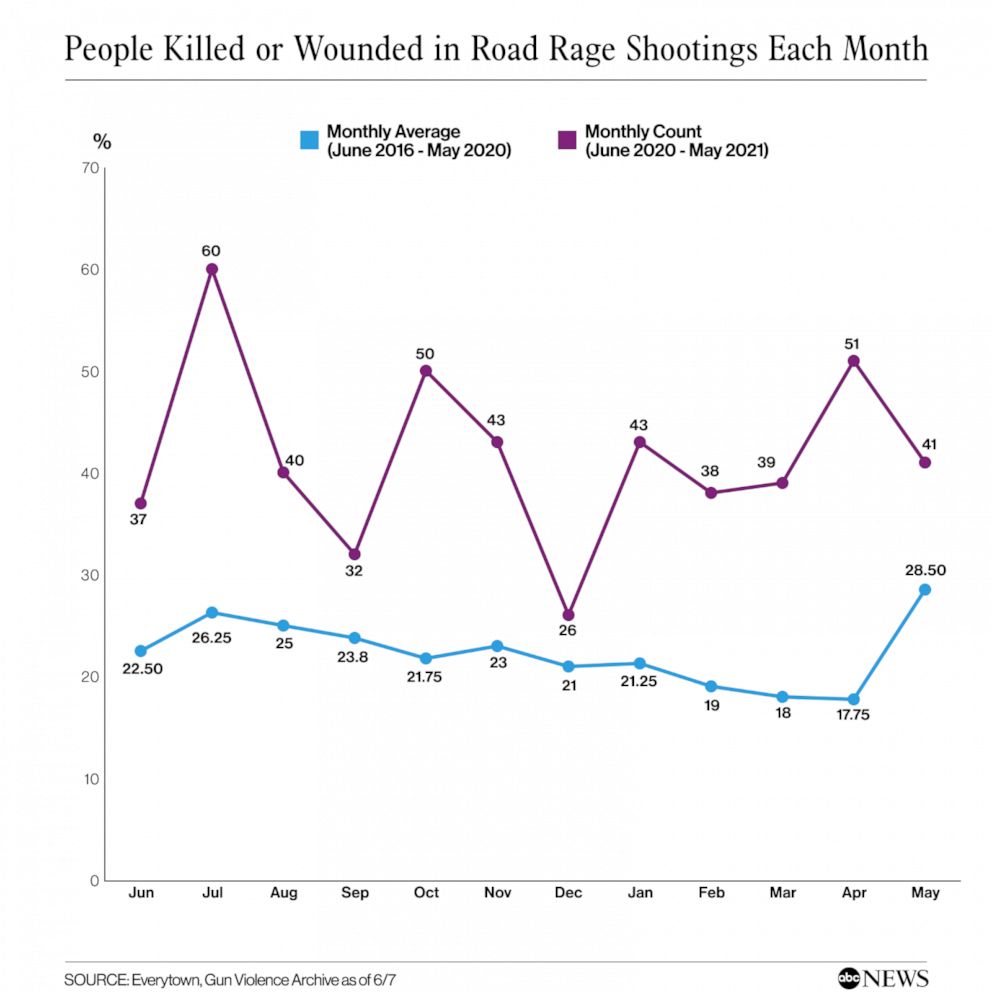
In 2016, Gun Violence Archive recorded that 241 people were shot and killed or wounded in a road rage incident; so far this year, as of June 7, that number is 212, the analysis found.
"I don't think we quite realized how dramatic the change was going to be," Sarah Burd-Sharps, director of research at Everytown for Gun Safety, told ABC News. "It's pretty disconcerting."
There is limited research on road rage shooting incidents, Burd-Sharps said, though several studies have found a link between aggressive driving and guns.
Two early-aughts studies from the Harvard Injury Control Research Center found that drivers who had a gun in their car were more likely to engage in aggressive behavior.
A 2017 study came to a similar conclusion, after randomly placing a tennis racket or a gun in a driving simulation to test what's known as the "weapons effect" on aggressive driving.
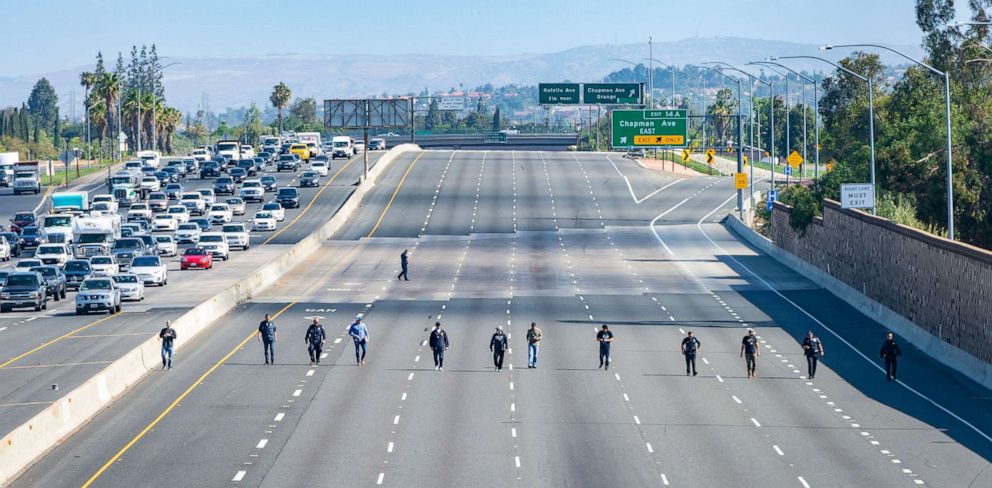
"The mere presence of a gun in a motor vehicle increases aggressive driving," one of the authors of the study, Brad Bushman, a professor of communication at Ohio State University who has studied aggression and violence for over 30 years, told ABC News.
"The chance that a situation of conflict, like being cut off in traffic, will end up deadly is increased if a gun is available," Bushman said.
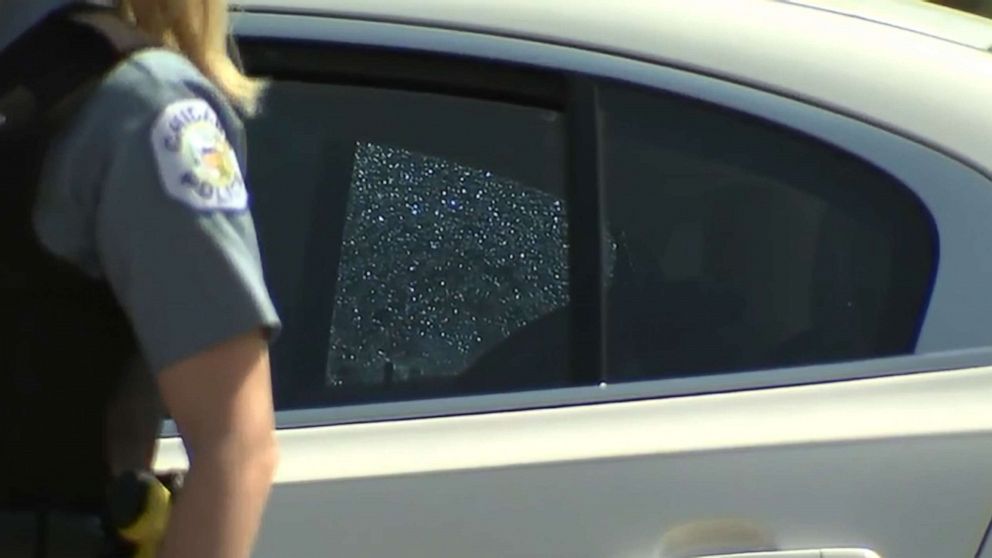
At the same time, the U.S. has recently seen a surge in gun sales. Last year saw a record 22.8 million sales, according to an analysis of data from the FBI's National Instant Criminal Background Check System by Small Arms Analytics & Forecasting, an industry research group. The previous record was 16.6 million sales in 2016, according to the firm.
"During the pandemic, we know that gun-related sales have skyrocketed," Bushman said. "It's just a toxic mix."
Data from the Gun Violence Archive shows the overall number of road rage incidents involving a gun have increased, from 616 in 2016 to 701 last year, according to Everytown's analysis. The gun control advocacy group projects that that number could top 800 this year.
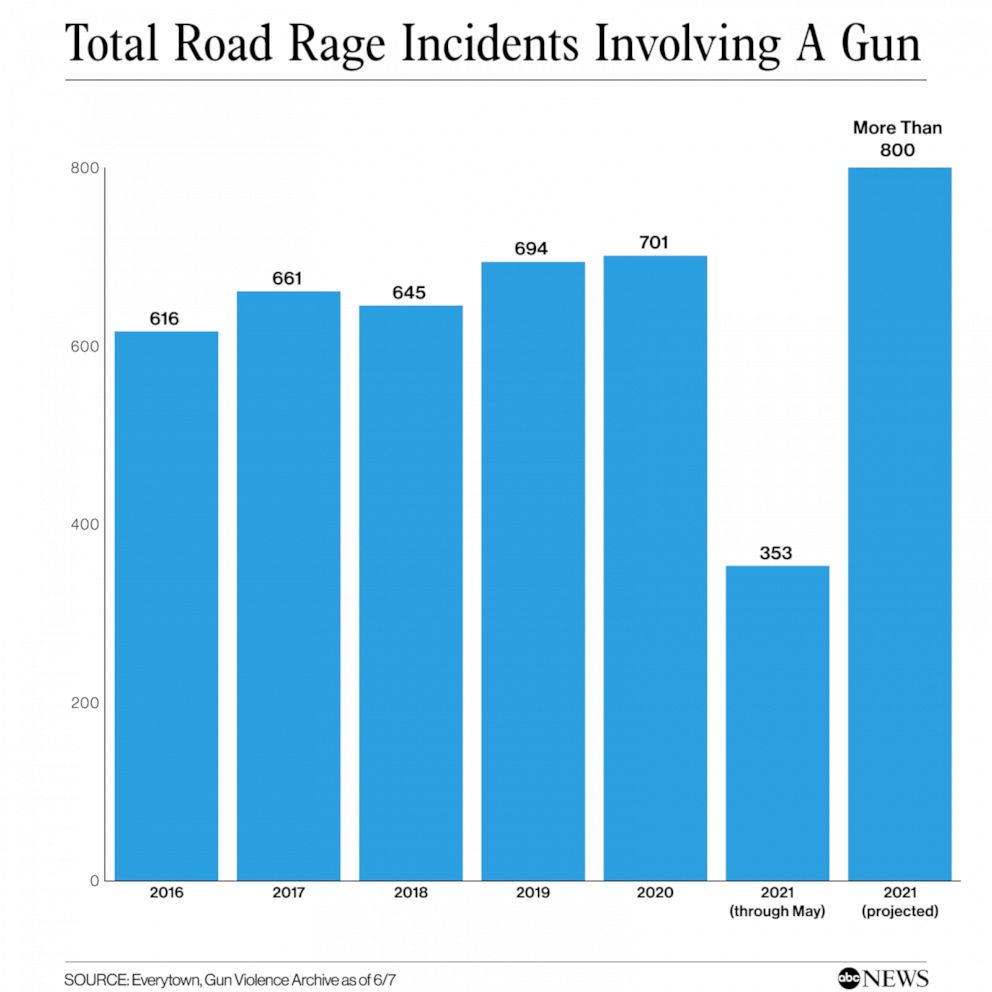
Road rage incidents involving a gun have also gotten more harmful, Everytown found; in 2016, 34% resulted in an injury or death, compared to 48% in 2020.
"Experiencing road rage is not uncommon. But it's when we get a gun involved that turns it from an unpleasant interaction to a dangerous incident," said Burd-Sharps, who posits that current trends this year "will only accelerate because more and more people are on the road now."
For Everytown, knowing the extent of death and injuries due to road rage shootings can help develop policy solutions that make roads safer.
"There are some laws in some states about guns and cars, but the focus is really on making sure that guns don't get stolen from cars," Burd-Sharps said. "There's very little about laws that stipulate that guns shouldn't be accessible to the driver."
Regulations vary by state on how, where and what types of firearms can be transported, though many require a permit or license to carry a loaded gun in a car. A small number require that firearms be unloaded (such as Colorado and Maryland) or additionally that they be locked or not directly accessible (such as California, New Jersey, New York and DC).

Among the hundreds of road rage shootings this year, the most high-profile has been the killing of 6-year-old Aiden Leos in Orange, California, last month, which officials said stemmed from a "perceived unsafe lane change." Police received hundreds of tips and at least $500,000 in rewards had been raised to help catch those responsible.
"It tore at the heartstrings of the community, no question about it," Orange County Supervisor Don Wagner told ABC News. "Outrage is not too strong a word, maybe not strong enough."
Two people were arrested earlier this week in connection with Leos' death; one was charged with murder and the other for illegally carrying a concealed firearm and for being an accessory after the fact. They are scheduled to be arraigned next week.
"Why so much interest in this little boy? I think I know the answer," Orange County District Attorney Todd Spitzer said during a press briefing announcing the arrests. "It's because it could have happened to any one of us."




